How Resume Job Matching Works
Resume Job Matching: What Happens in an ATS
When you apply for a job, your resume is scanned by an Applicant Tracking System (ATS). If the ATS determines your resume job match score is too low, your application may never reach a recruiter. This isn’t personal, it’s simply how modern ATS job matching software works. That's why tailoring your resume to the job you're applying for is crucial.
With hundreds or even thousands of applications per posting, recruiters and hiring managers rely on ATS software to efficiently compare resumes to job descriptions and filter out unqualified candidates. The problem is that many job seekers don’t understand how these systems calculate a resume job match. Even if they possess the right skills, they often fail to present them correctly on their resume.
Most resume optimizing tools stop at keyword matching. They simply check if certain words appear. But keyword matching is naïve: it doesn’t know what a word means, how recently it was used, or in what context. This is why keyword stuffing rarely improves resume job match scores.
Modern ATS engines use semantic matching. They evaluate context: where a skill appears, when it was last used, and whether it’s backed up with real work history. This allows them to distinguish true matches from false positives.
In addition to skills, ATS resume job matching algorithms also evaluate categories such as job titles, certifications, and education. While these are often presented correctly in resumes, mistakes in formatting or phrasing can still lower your match score.
Real-World Example
Suppose a Senior Python Developer role requires 5–10 years of Python experience. Why does Version 2 of the resume below score 15 points higher than Version 1? Hint: The difference is subtle but critical.
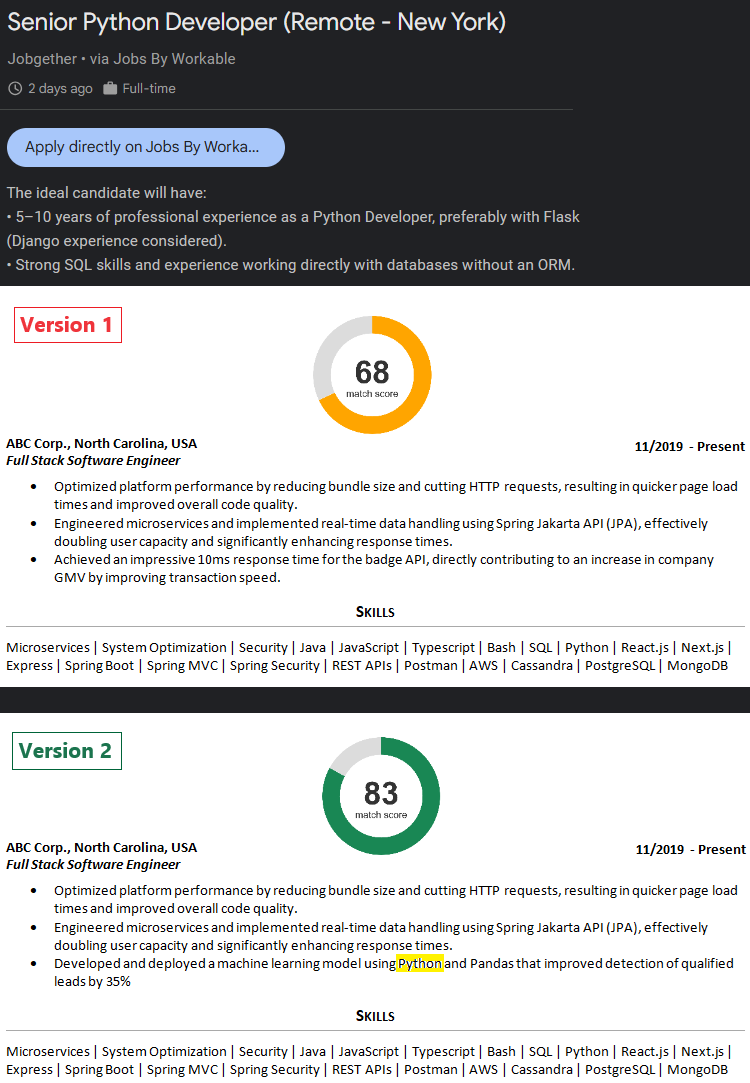
The answer is: Context.
Modern ATS job matching algorithms scan resumes for required skills and calculate a resume job match score based on both presence and context.
- Version 1: Python appears only in the skills section.
- Version 2: Python is in the skills section and included under the most recent job with context: “Developed and deployed a machine learning model using Python and Pandas that improved lead detection by 35%.”
Why it matters: In Version 1, the ATS sees the keyword but no context or timeline (was it used 10 years ago? last month?). In Version 2, the ATS infers recency and duration (Python used from 2019 to present), satisfying the 5+ year requirement and raising the match score. This is semantic matching in action, and why Resume Optimizer Pro gives you a major edge over keyword-only tools.
How Resume Optimizer Pro Improves Your Match Score
Resume Optimizer Pro removes the guesswork from the resume job matching process. Unlike other tools, we do all the heavy lifting to maximize your match score in seconds. Here’s how it works:
1) Upload your resume
Upload your resume to the dashboard. Even if it’s poorly formatted, we’ll automatically fix structure and readability for ATS compatibility.
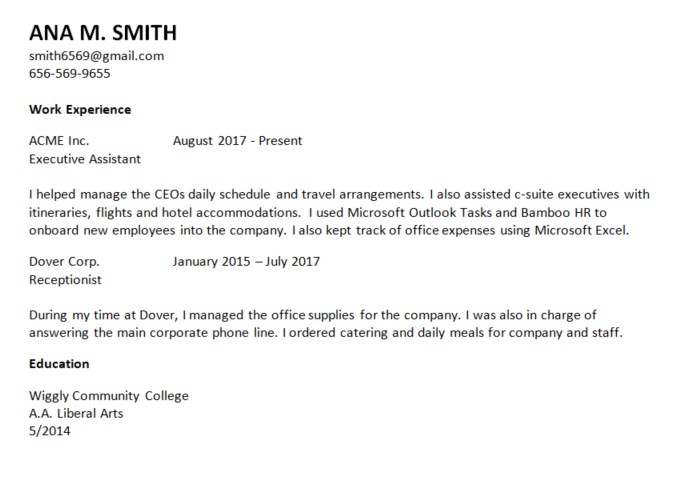
2) Paste a job description
Paste the job description you want to apply for. Our AI Job Matching Analyzer detects must-have and nice-to-have skills required for the role.
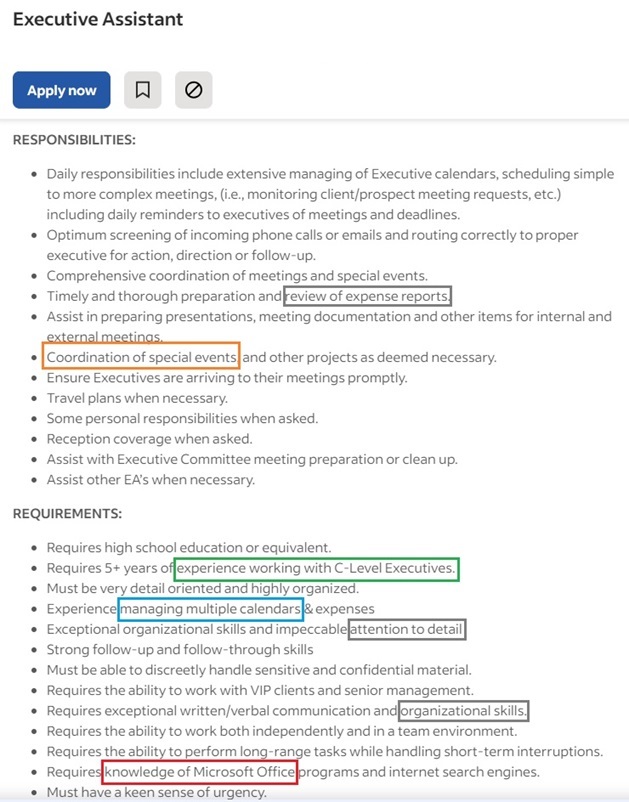
A detailed report is generated showing your overall match score along with strong matches, partial matches, and gaps in simple, easy-to-understand terms.
3) Select your relevant skills
To boost your score, add any missing skills you actually have, or let Resume Optimizer Pro automatically optimize your resume for you.
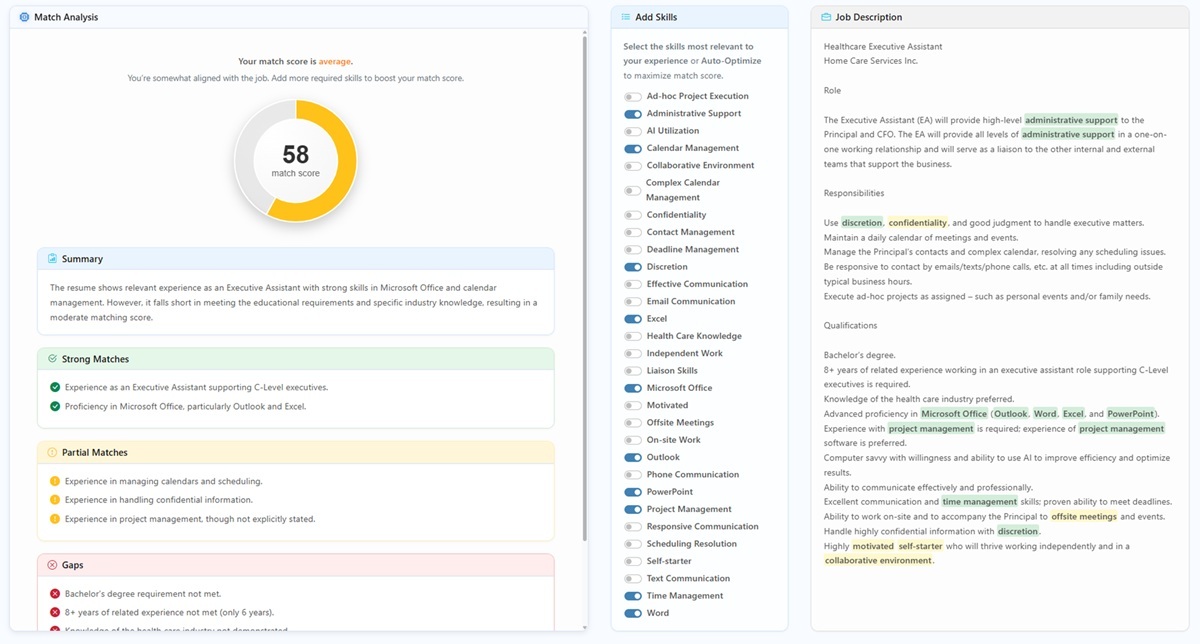
4) Retrieve your optimized resume
Your updated resume job match score and improvements will be displayed. Any score above 80 is considered a strong match, so you can be confident applying with this resume.
Download and review your ATS-optimized resume. Your selected skills will be included in the skills section and semantically integrated within your work history to maximize your match score. Make any final edits, then confidently apply to the job.
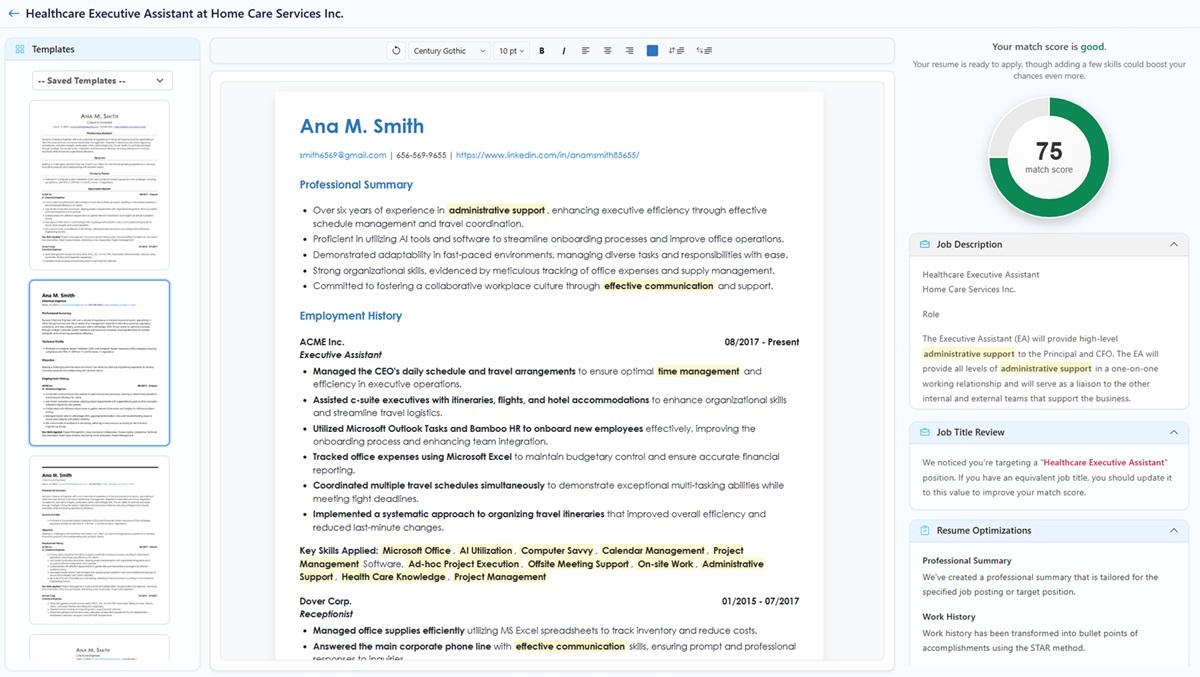
Key Takeaways
- Resume job match scores decide visibility. A low score means your resume may never be seen by a recruiter, no matter how qualified you are. A higher score pushes your resume to the top of the ATS ranking.
- Keyword matching isn’t enough. Modern ATS engines look for context: where and how skills appear, when they were last used, and whether they’re supported by real work history. Simply repeating keywords won’t raise your match score.
- Resume Optimizer Pro maximizes your score with semantic integration. Instead of stuffing keywords, ROP rewrites your resume so skills are naturally placed in your summary, skills section, and work history in the exact way ATS algorithms are designed to read them.
- The process is simple and fast. Upload your resume, paste the job description, select your relevant skills, download an ATS-optimized resume, and make any final edits. You're now ready to apply.